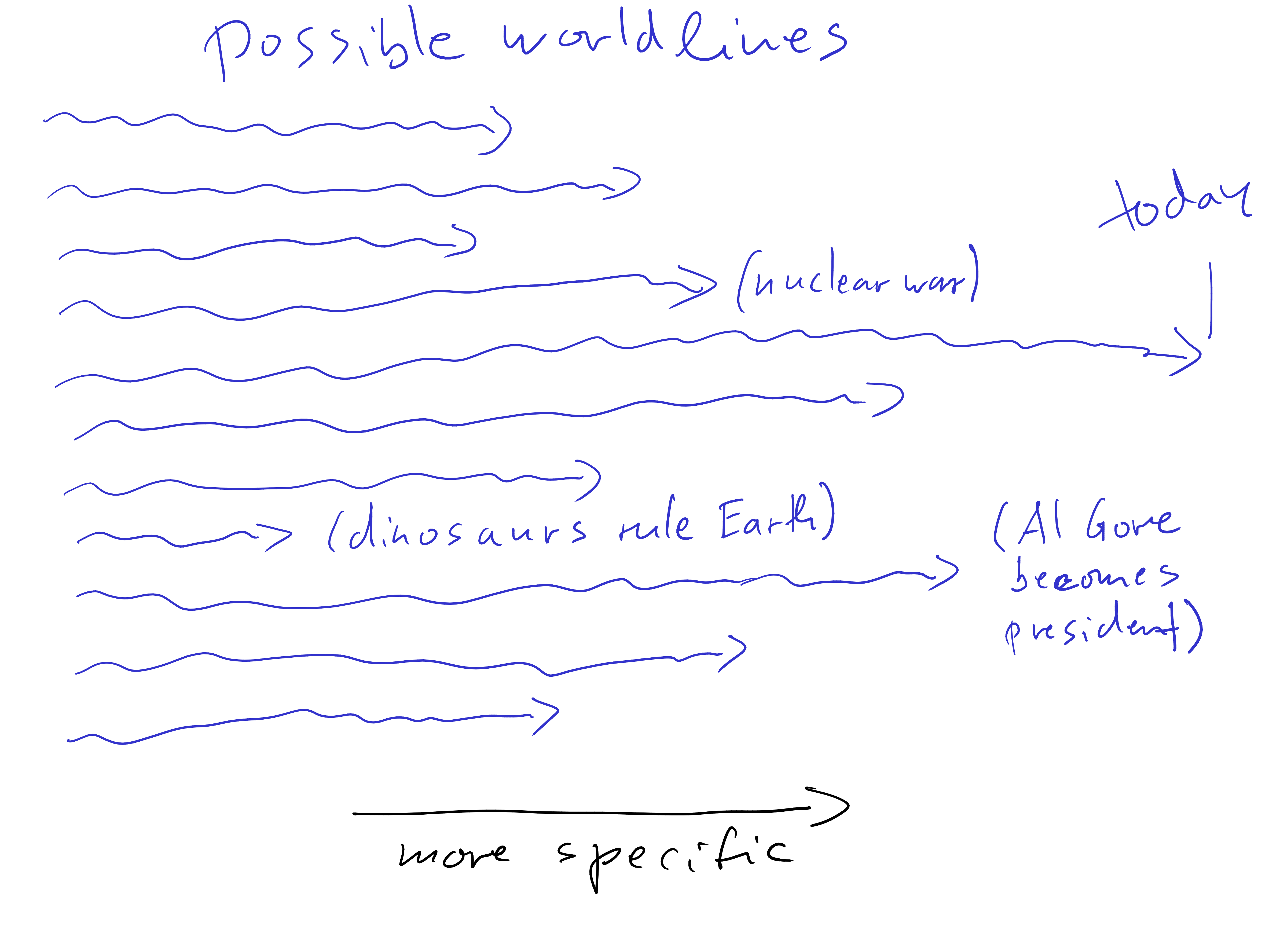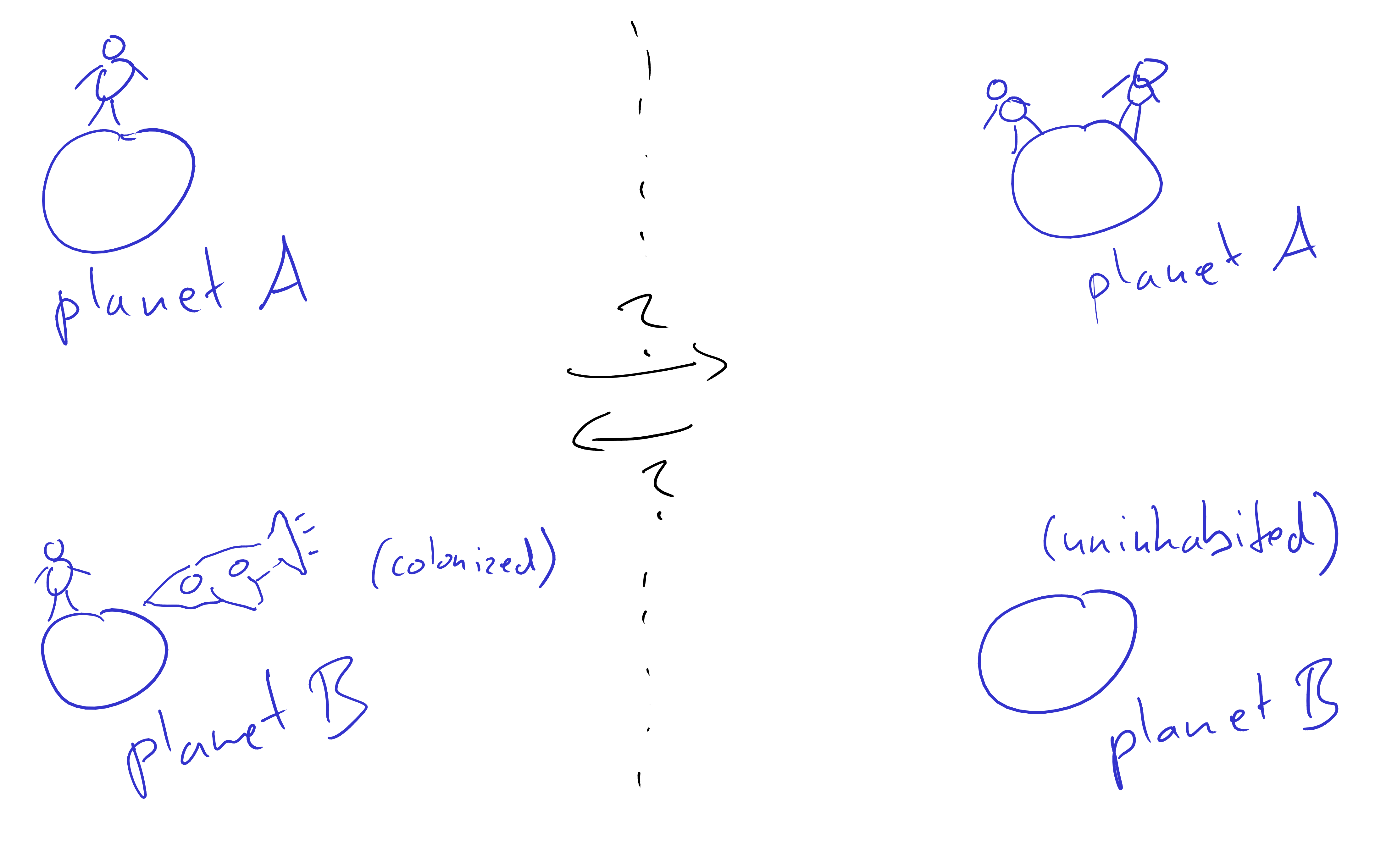Statistical Time
or Timeless Causality
Thomas Kehrenberg
21st April 2022
PAL reading group
Can we get causality/time-ordering from observational data
that doesn’t have time stamps?
Refresher on Bayesian networks
Bayesian networks are just visual representations of independencies.
\(P(x_1, ..., x_n)=\prod_i P(x_i|pa(x_i))\)
in this case:
\(P(A, B, C, D, E)=P(A)P(B|A)P(C|B)P(D|B)P(E|A,C)\)
Do the arrows indicate causality?
No.
These two imply the same factorization
\(P(A,B)=P(A)P(B|A)\)
\(P(A,B)=P(B)P(A|B)\)
So: meaningless arrows for now
Can we at least infer the meaningless arrows
from observational data?
With 3 nodes, it’s also not guaranteed.
\(P(A, B, C) \\= P(C|A)P(B|A)P(A)\)
so: \(P(C|A,B)=P(C|A)\)
so: \(B\perp C|A\)
\(P(A, B, C)\\=P(C|A)P(A|B)P(B)\)
so: \(P(C|A,B)=P(C|A)\)
so: \(B\perp C|A\)
But with a collider we can!
implied factorization: \(P(A, B, C) = P(C|A, B)P(A)P(B)\)
so: \(P(A|B)=P(A)\)
so: \(A\perp B\)
(but: \(A\not\perp C\quad B\not\perp C\quad A\not\perp C|B\quad B\not\perp C|A\quad A\not\perp B|C\))
There are 25 possible DAGs with 3 nodes
wanted: \(A\perp B\) (and no other independence)
wanted: \(A\perp B\) (and no other independence)
Remember: the rules for reading off independencies simply follow
from what the DAG implies about how the joint probability factorizes.
So, in some cases we can recover the DAG structure
Do the arrows in colliders represent causality?
Potentially.
But maybe 3 nodes is not enough to define time.
We need 4 nodes
\(A\perp B\)
\(X\perp Y|A,B\)
(there are 543 DAGs with 4 nodes...)
Try it out with this Markov chain process
\(G_t = \alpha G_{t-1} + \beta H_{t-1} + \xi_t\)
\(H_t = \gamma G_{t-1} + \delta H_{t-1} + \eta_t\)
\(\xi_t\), \(\eta_t\): iid noise (very important)
You will be able to uniquely recover the structure of the chain.
Claim:
if you have variables \(A\), \(B\), \(X\), and \(Y\) that are consistent with this DAG,
then \(A\) and \(B\) happened before \(X\) and \(Y\):
\(A, B <_T X, Y\)
(this is Statistical Time)
How can we make such a bold claim?
Intuition for why there is an asymmetry
between past and future
Assume stochastic world

- Another insight is that things become more entangled as time goes on.
- In the past, there might be points that have not causally interacted yet.
- But this gets rarer and rarer as time goes on.


\(X\perp Y|A,B\)
\(A\not\perp B|X,Y\)
- from the perspective of the past, the future hasn’t become entangled yet
- from the perspective of the future, the past is very entangled
Examples
of the form:
we know the true time and check whether statistical time agrees with it
- \(A\): was there an earthquake?
- \(B\): did a burglar come to my house?
- \(X\): is the backyard window broken?
- \(Y\): is the dog in the front yard barking? (who cannot hear or see the backyard window)
\(A\perp B\) ?
\(A\not\perp B|X,Y\) ?
\(X\perp Y|A,B\) ?
\(X\not\perp Y\) ?